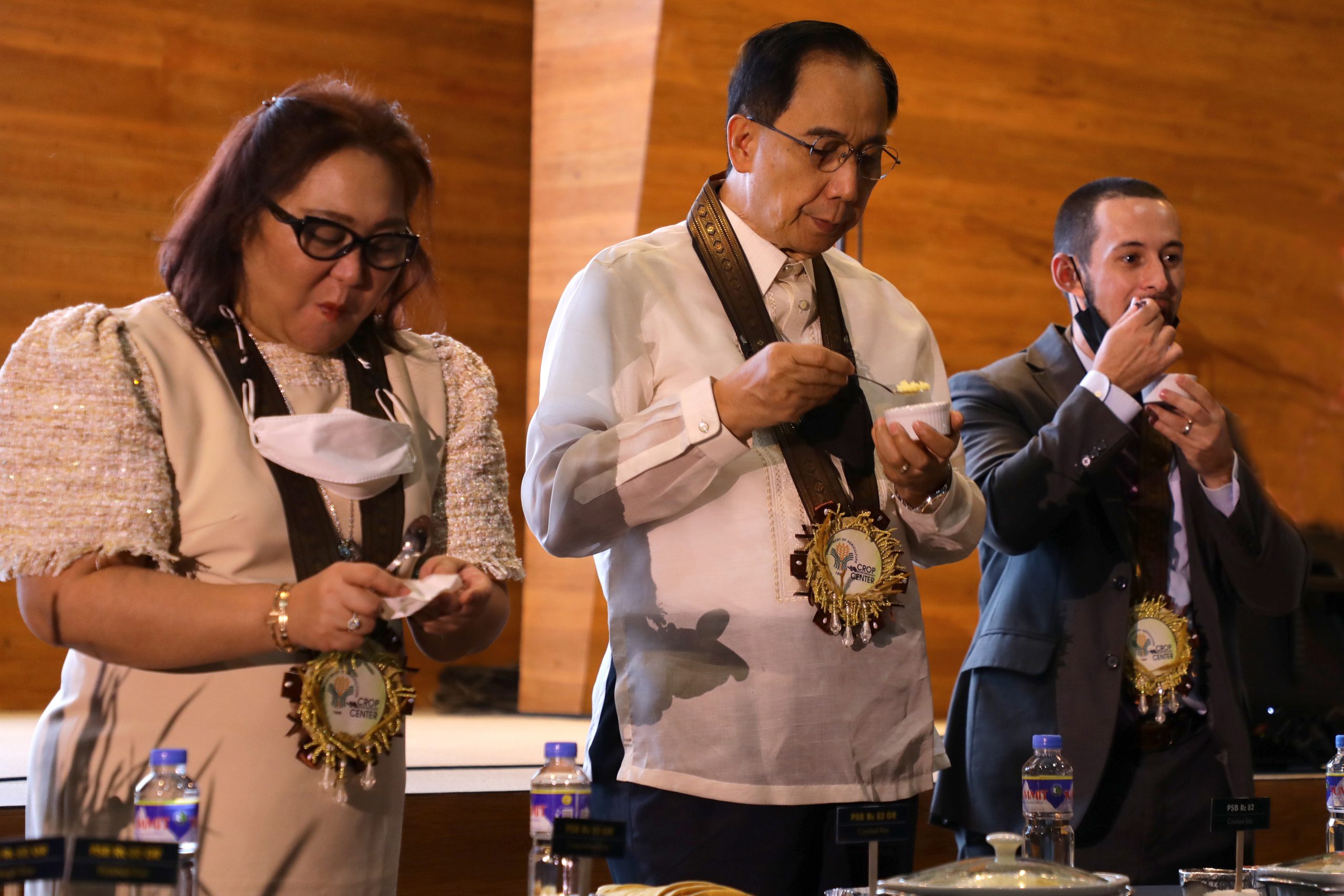
Stakeholders favor “Golden Rice” over ordinary white rice in terms of its health benefits during the former’s ceremonial tasting, held recently in Muñoz, Nueva Ecija.
“It smells and tastes the same as ordinary rice, except it is colored yellow. But I will choose ‘Golden Rice’ over white rice, because it has more health benefits. Kung sana noong bata pa ako ay meron na nito, sana mas malusog pa ako,” said Agriculture Secretary William Dar, during the rice-tasting event as part of the inauguration of the Department of Agriculture’s Crops Biotechnology Center (DA-CBC).
“It tastes almost the same. We will choose ‘Golden Rice’ because it has health benefits. Kaya dapat, we should switch to ‘Golden Rice’ instead of eating the regular white rice,” added Representative Micaela Violago, of the 2nd District of Nueva Ecija.
“Indeed, ‘Golden Rice’ is a welcome development, as its regular consumption would give children more Vitamin A and therefore clearer eyesight,” said Representative Maricel Natividad Nagaño, of the 4th District of Nueva Ecija, who is an ophthalmologist by profession.
“I couldn’t help myself, and I ate all of it. It is great. I am a fan, I will feed it to my two daughters,” said US Agricultural Attaché Ryan Bedford during the taste-test.
“The respective comments of the four officials affirm the results of the first sensory evaluation of ‘Golden Rice’ we conducted in 2019,” said Dr. Marissa Romero, co-lead of the Healthier Rice Project, adding that “Golden Rice” is indistinguishable in terms of taste, aroma, and texture from conventional rice varieties.
“We will use the favorable feedback from the ceremonial taste-test and results from our previous sensory evaluation tests to promote ‘Golden Rice’ to the consuming public,” added Romero.
“These favorable feedback will expunge doubts on the benefits of ‘Golden Rice,’ and the DA-Philippine Rice Research Institute (PhilRice) will vigorously promote it as a nutritious food to consumers especially to those with high malnutrition and vitamin A deficiency, which is prevalent among children and pregnant women,” said Secretary Dar.
Vitamin A deficiency (VAD) is the leading cause of preventable blindness, and contributes to stunting and malnutrition, among children five years old and below. VAD weakens the body’s resistance to diseases and infections, and may even result in death if left untreated.
In the Philippines, VAD incidence continues to be a significant public health issue, affecting nearly 17 percent, or 2 million Filipino children under the age of five, according to the 2018 Expanded National Nutrition Survey of the Department of Science and Technology – Food and Nutrition Research Institute (DOST-FNRI).
“Golden Rice” is like ordinary rice but enriched with beta carotene, which the body converts into vitamin A as needed. Beta carotene is also found in yellow-colored and green leafy vegetables. The increased consumption of “Golden Rice” by Filipino families would improve their dietary and nutritional requirements, said Romero.
DOST-FNRI experts said that one cup of cooked “Golden Rice” can provide 30 to 50 percent of the estimated average requirement (EAR) of vitamin A for preschoolers, and pregnant and lactating mothers. Their study further shows that beta carotene-enriched rice, like “Golden Rice,” could improve vitamin A intake and could reduce the prevalence of VAD among women and children.
In all, Secretary Dar said: “We take pride as the Philippines, under the leadership of President Rodrigo Roa Duterte, is the first country to approve ‘Golden Rice’ for commercialization. As such, the rest of the world will be looking at our experience before they join the bandwagon.”
With the release of the biosafety permit for the commercial propagation of “Golden Rice” in July 2021, DA-PhilRice, in collaboration with the International Rice Research Institute (IRRI) and other partners, are taking the step towards bringing the vitamin A-enhanced rice to farmers through the production of seeds.
It will require three to four cropping seasons to produce sufficient supply of seeds for commercial farm cultivation, said PhilRice Director John de Leon.
Limited amount of seeds may be made available for the pilot-scale deployment of “Golden Rice” next year, while succeeding seeds will be distributed in target areas with high prevalence of vitamin A deficiency by the last quarter of 2023, de Leon added. ### (Christopher John Gonzales, DA-PhilRice)













